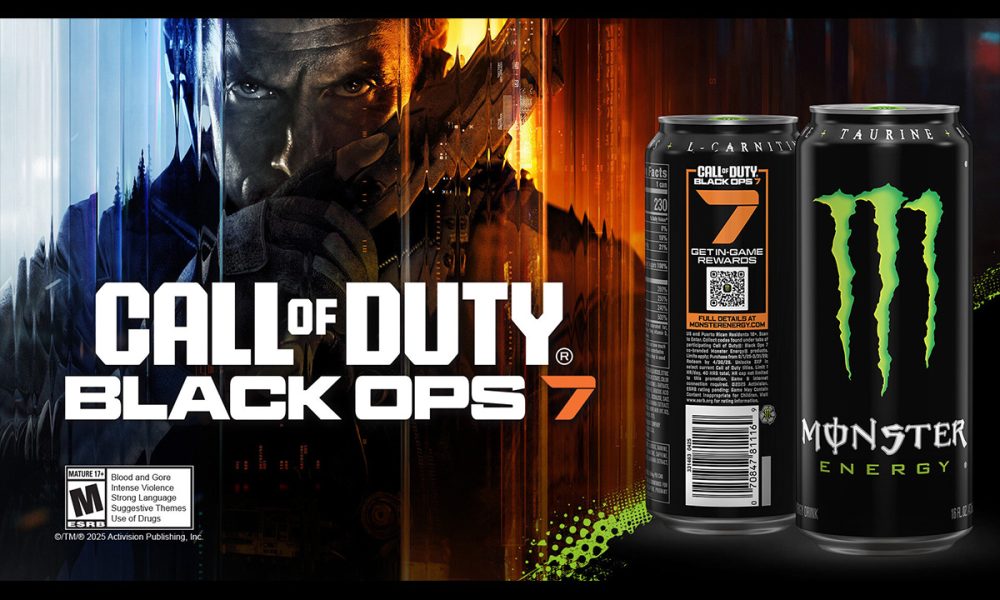gaming
Outlook on the Mobile Gaming Global Market to 2027 – Players Include Apple, Electronic Arts, Gameloft and Games Inc
The “Global Mobile Gaming Market by Technologies, Platforms, Connectivity Types and Ecosystem Stakeholders 2022 – 2027” report has been added to ResearchAndMarkets’ offering.
This report represents a comprehensive analysis of global mobile gaming opportunities. It provides insights into the mobile gaming business and analysis of current limitations, challenges, and opportunities. The report evaluates current and future mobile gaming technologies, new media, and its dynamics with the mobile gaming business.
The report includes mobile game development studios, publishing companies including local app stores and social networks, gaming economy management companies, mobile gaming business model and drivers, global and gaming business prospects, and mobile network operators.
The report includes extensive user analysis including demographics and preference analysis by game type, device type, connection type and more. It includes comparative analysis by age, gender, income, and spending habits.
Select Report Findings:
- Mobile social game will hold highest market share
- Retail industry will be the fast adopter in branded game segment
- Consumer payment will be the highest market share within gaming service segment
- Gaming Management provider will experience highest CAGR during forecasted period
Today smartphones lead the mobile gaming platform by users but tablets generate higher rates across paid monetization, micro transactions, and advertising. Tablets have started competing substantively with console devices and may overtake them in the near future. Tablets now represent an attractive mid-core gaming platform.
The proliferation of app store and social networking site portals has greatly contributed to the development of the mobile gaming market. Developers can now sell games directly through the app store and can build social communities that lead to greater scope for monetization. Cloud-based publishing has enabled multi-screen publishing and seamless game play across mobile, console and mobile devices that fostered mobile gaming greatly.
Key Topics Covered:
1.0 Executive Summary
2.0 Introduction
2.1 Defining Mobile Gaming
2.2 Mobile Gaming App Development
2.3 Gaming Platform Analysis
2.4 Strategic Market Impact Analysis
2.5 Mobile Gaming Apps Types
2.5.1 Multiplayer Mobile Gaming
2.5.2 Mobile Social Gaming
2.5.3 Mobile Location Based Gaming
2.5.4 Mobile Video Gaming
2.5.5 Mobile Cloud Gaming
2.5.6 Mobile Casual Gaming
2.5.7 Free-to-Play App
2.5.8 Mobile Casino Gaming
2.5.9 Gamification App
2.6 Market Dynamic Analysis
2.6.1 Market Growth Driver Analysis
2.6.2 Market Limitation Analysis
2.7 Regulation and Fraud Analysis
2.7.1 Mobile Game Piracy and Virtual Currency Scam
2.7.2 Mobile Social Gambling Ban in Japan
2.7.3 Geographic Implication of Antipiracy Law
2.7.3.1 Japan
2.7.3.2 Russia
2.7.3.3 China
2.7.4 Zynga with PrivacyVille
2.7.5 Cyber Criminal Attack on Mobile Social Game
2.7.6 In-Game Scam Debate in Mobile Social Game
2.7.7 Open Web to Save DMCA: MiniMega vs. TomKid Game
2.7.8 RMT and Gold Farming Regulation
2.7.9 Offshore Opportunity in Asia
2.8 Value Chain Analysis
2.8.1 Mobile Game Developer
2.8.2 Mobile Game Publisher and Service Aggregators
2.8.3 Sales Channel and Platform Providers
2.8.4 Telecom Operators
2.8.5 Hardware Manufacturer
2.8.6 New Entrants Role
2.8.6.1 Technical and Legal Role of Technology Provider
2.8.6.2 Virtual Goods and Currency Provider Role
2.8.6.3 Micro Transaction Solution Provider Role
2.9 Cross Platform OTI vs. OTA Distribution and Fragmentation
2.9.1 Major Challenges in Fragmented Distribution
2.10 Monetization Metrics Analysis
2.10.1 Converting Mobile Gaming Metrics to Conversion Funnel
2.10.2 Game Life Cycle and KPI
2.10.3 Gaming Analytics
2.10.4 Viral vs. Retention
2.10.5 Business Monetization Metrics
2.10.6 Brand Monetization Metrics
2.10.7 Game Monetization
2.10.7.1 Crowded Game Store
2.10.7.2 Player retention and Engagement
2.10.7.3 Premium Model
2.10.7.4 Opportunity for Game Maker
2.11 Mobile Social Game Design Framework
2.11.1 F2P Mobile Social Game Design Framework
2.11.2 Benefits for using framework
2.11.3 Nine Dimensions of the Framework
2.11.4 Adding Fun in Game Design
2.11.5 Game Marketing: Role of Apps, Video, Smart TV, and Viral
2.11.5.1 Gaming Apps Marketing
2.11.5.2 Video Marketing
2.11.6 Role of Smart TV and Location Targeting
2.11.7 Importance of Viral
2.12 Mobile Social Gamer Engagement Panorama
2.12.1 First 3 Days Dilemma
2.12.2 7 day + Dilemma
2.12.3 Rising Mobile Gaming Engagement
2.12.4 Blending game science with art
2.12.5 Empathy Game: New Wave of Engagement
2.13 Business Model Analysis
2.13.1 Key Mobile Gaming Strategies
2.13.2 Revenue Sources and Cost Items
2.13.3 Trendy Business Model
2.13.3.1 Virtual Items and Micro Transaction
2.13.3.2 In-Game Ad / Branded Games
2.13.3.3 Subscription/Bundle Pack with Virtual Items Trading
2.13.3.4 In-Game Ad / Branded Game with In-Store Benefits
2.13.3.5 Premium Game with In-Store Benefits
2.13.3.6 Casino / Club Gambling Model
2.13.3.7 User Generated Model
2.13.3.8 Gamification Centric Model
2.13.4 Tips for Economic and Gamification in Business Model
2.13.4.1 Free entertainment illusion
2.13.4.2 Never set payment limit for user
2.13.4.3 Focus on detail activities
2.13.4.4 Recruit more players
2.13.4.5 Current Trend in Pricing Model
2.13.5 Advertising Model
2.13.5.1 CPC Advertising Model
2.13.5.2 CPI Advertising Model
2.13.5.3 Profitable CPI
2.13.5.4 Pricing of Virtual Goods
2.13.6 Building Mathematical Model to Set Price
2.13.7 Market Challenge and Game Balancing Method
3.0 Technology and Application Analysis
3.1 Gaming Hardware Analysis
3.2 Gaming Software Analysis
3.3 Gaming Service Analysis
3.4 Gaming Management Provider
3.5 Gaming Technology
3.5.1 Action and Adventure
3.5.2 Social Casino
3.5.3 Sports and Role Playing
3.5.4 Strategy and Brain
3.5.5 Arcade
3.5.6 Other Technologies
3.6 Connectivity Analysis
3.6.1 WiFi
3.6.2 Cellular (4G LTE/5G)
3.6.3 Wimax
3.6.4 Bluetooth/BLE
3.6.5 LPWAN Connectivity
3.7 Mobile Gaming Success Strategy Analysis
3.7.1 Features to Incorporate in Game
3.7.2 Popular vs. New Gaming IP
3.7.3 Mobile Game Production Cost
3.7.4 Successful Gaming IP line Creation
3.7.5 Minimize Marketing and User Acquisition Cost
3.7.6 Use of Monetization Strategies
3.8 Investment Trend Analysis
3.8.1 Second Screen including Mobile Devices and TV
3.8.2 Social vs. Game Network
3.8.3 Gaming Industry Transition and Fragmentation
3.8.4 Gaming Sector and Business Model
3.8.5 Value vs. Volume Regions
3.9 Wearable Gaming
3.9.1 Smartwatch as Wearable Gaming Platform
3.9.1.1 Pervasiveness
3.9.1.2 Interface
3.9.2 Potential Platform Analysis
3.9.2.1 Mind Pirate
3.9.2.2 OBJE (Obscene Interactive)
3.9.2.3 Oculus Rift
3.9.2.4 Sony
3.9.3 Privacy concerns
4.0 Company Analysis
4.1 Mobile Game Developer and Publisher
4.1.1 Activision Blizzard
4.1.2 Alphabet (Google)
4.1.3 Apple
4.1.4 Electronic Arts
4.1.5 Gameloft SE
4.1.6 Games Inc.
4.1.7 Take-Two Interactive Software
4.1.8 Glu Mobile
4.1.9 GungHo Online Entertainment
4.1.10 IBM corporation
4.1.11 InMobi
4.1.12 Kabam Games
4.1.13 MocoSpace
4.1.14 NetEase
4.1.15 Nintendo
4.1.16 Oracle corporation
4.1.17 Rovio Entertainment
4.1.18 Sony Interactive Entertainment
4.1.19 Supercell Oy
4.1.20 Tencent Holdings
4.1.21 The Walt Disney Company
4.1.22 Ubisoft Entertainment SA
4.1.23 Zynga
4.1.24 Halfbrick
4.1.25 Capcom
4.1.26 Namco Bandai
4.1.27 Gamevil (Com2uS)
4.1.28 Zeptolab
4.1.29 Square Enix
4.1.30 Gameprom
4.1.31 Kairosoft
4.1.32 Konami
4.1.33 GREE
4.1.34 DeNA
4.1.35 Sina Weibo
4.1.36 Papaya Mobile
4.1.37 Hungama Games
4.1.38 Anino mobile
4.1.39 Socialpoint
4.1.40 Agate Studio
4.1.41 Renren
4.1.42 Kaixin001
4.1.43 51.Com
4.1.44 Mixi
4.1.45 Cyworld
4.1.46 Bebo
4.1.47 Amazon
4.1.48 Gaia Online
4.1.49 Badoo
4.1.50 Chillingo
4.1.51 KakaoTalk
4.1.52 Line
4.1.53 Wandoujia
4.1.54 Baidu App store
4.1.55 Facebook Games
4.1.56 Slide ME
4.1.57 GetJar
4.1.58 CodeNgo
4.1.59 Apps UK Ltd.
4.1.60 Anzhi
4.1.61 F-Droid
4.1.62 Cydia
4.1.63 Nvidia (Geoforce)
4.1.64 Nook App Store
4.1.65 Taobao App Market
4.1.66 Bemobi International
4.1.67 Mobango
4.1.68 Appitalism
4.1.69 Kongregate
4.1.70 Maopao
4.1.71 Alternative.To
4.1.72 360 Market
4.1.73 Xiaomi App store
4.1.74 One Store Corp.
4.1.75 MTNPlay
4.2 Gaming Service Management Provider
4.2.1 WildTangent
4.2.2 iWin
4.2.3 Twitch.TV
4.2.4 Appia
4.2.5 XSplit
4.3 Carrier Analysis
4.3.1 AT&T
4.3.2 Verizon
4.3.3 T-Mobile USA
4.3.4 Vodafone
4.3.5 EE
4.3.6 Telenor
4.3.7 NTT DoCoMo
4.3.8 KDDI au
4.3.9 China Mobile
4.3.10 China Unicom
4.3.11 China Telecom
4.3.12 Airtel (Bharti)
4.3.13 Vodafone Idea
4.3.14 SK Telecom
4.3.15 Telstra Mobile
4.3.16 Optus Mobile
4.3.17 MTS
4.3.18 Telkomsel
4.3.19 Indosat
4.3.20 Viettel
4.3.21 Globe Telecom
4.3.22 Maxis
4.3.23 SingTel Mobile
4.3.24 AIS
4.3.25 DTAC
4.3.26 Etisalat
4.3.27 Cellcom
5.0 Market Analysis and Forecasts 2022 – 2027
5.1 Mobile Gaming Market 2022 – 2027
5.2 Mobile Gamer 2022 – 2027
5.3 Mobile Gamer: Demography Analysis 2022 – 2027
6.0 Conclusions and Recommendations
Call of Duty
Monster Energy and Call of Duty Unite Again with Exclusive In-Game Rewards and Expanded Program Timing

Monster Energy is teaming up once again with Call of Duty to deliver bonus in-game rewards, bonus 2XP and an expanded promotional window that gives fans even more opportunities to fuel up and power their gameplay.
Gamers and Monster fans can start collecting codes to stockpile rewards ahead of the highly anticipated release of Call of Duty: Black Ops 7 on November 14. Following the record-breaking success of the last year’s program – the 2025 campaign has been extended and will run through March 31, 2026, with code redemption available until April 30, 2026.
Players who purchase specially marked Call of Duty cans of Monster Energy, Monster Zero Sugar, or Monster Zero Ultra can find a unique code under the tab and redeem it online at callofduty.monsterenergy.com. Every can unlocks bonus in-game items and double experience points.
2025 in-game rewards include:
• 1 Can = “Energy Flash” Large Decal + 15 min 2XP
• 2 Cans = “Peacekeeper MK1 – Hyper Green” Weapon Blueprint + 15 min 2XP
• 3 Cans = “Green Fury” Operator Skin + 15 min 2XP
• 4 Cans = “VS Recon – Green Thunder” Weapon Blueprint + 15 min 2XP
• 5 Cans = “Daylight Ripper” Operator Skin Recolor + 15 min 2XP
In addition, select retailers will feature specialty bonus in-game content such as Emblems, Charms, Weapon Stickers, and Dual 2XP.
And as an added bonus, fans who create an account on callofduty.monsterenergy.com before October 31 will score a Black Ops 6 in-game skin – no purchase required.
“Monster Energy is built on fueling competitive spirit and our collaboration with Call of Duty continues to push that to new levels. With expanded timing, bonus rewards and the unmatched value of Double XP in every can, this year’s program is our biggest and most exciting yet,” said Dan McHugh, Global Chief Marketing Officer at Monster Energy.
“We’re proud to continue building on the success of our partnership with Monster Energy. Monster is the go-to fuel of gamers and they are going to drink up these exciting in-game rewards,” added Cody Neal, Associate Director of Global Partnerships, Call of Duty.
The limited-edition Monster Energy Call of Duty cans are available in 16oz in Original Monster Energy, Monster Zero Sugar and Monster Zero Ultra. Special 4, 12, and 15 can Monster Energy Call of Duty multipacks are on shelves now.
The post Monster Energy and Call of Duty Unite Again with Exclusive In-Game Rewards and Expanded Program Timing appeared first on Gaming and Gambling Industry in the Americas.
gaming
Gamescom 2025: New Records and Important Impetus for the Games Industry in Germany and Worldwide

Gamescom 2025 ended with numerous new records and strong momentum for the games industry in Germany and worldwide. Records were once again set, particularly in terms of key figures such as internationality (70% of visitors from abroad, exhibitors from 72 countries), digital reach (more than 630 million views worldwide by 23 August evening alone), exhibition space (233,000 square metres) and the number of exhibitors (1568). On site, 357,000 fans visited the world’s largest festival of games culture. The number of trade visitors rose to 34,000, with a particularly strong increase in participants from the US, China, Canada and Japan.
“This year, gamescom 2025 is sending out a particularly positive signal. After two challenging years for the games industry, you could really feel the mood improving this year. The new record figures underline not only the global appeal of gamescom, but also the upward trend in the entire games industry. gamescom 2025 is also a milestone for the German games industry: political support for the additional tax-based games funding at gamescom was stronger than ever – from both the federal and the state level alike. This creates hope that progress will be made quickly. But there were also positive signals on many other political topics, whether for e-sports from Federal Minister Bär at the political opening or from Federal Minister for Family Affairs Karin Prien, who was just as convinced of the important work of the USK in the protection of minors as she was of the enormous potential of games for the education sector,” said Felix Falk, Managing Director of game – The German Games Industry Association, the co-organiser of gamescom.
Political interest in gamescom 2025 was greater than ever before. In total, over 600 politicians came to Cologne to see for themselves the current developments in the games industry and the enormous economic, cultural and technological potential of games. Whether from the federal states, the federal government or the EU, the political guests came from all levels. In addition, a particularly large number of international delegations travelled to gamescom, for example from this year’s gamescom partner country Thailand as well as from Brazil, Indonesia and India.
Gamescom 2026 will take place from 26 to 30 August. It will open on 25 August 2026 with the gamescom Opening Night Live.
The post Gamescom 2025: New Records and Important Impetus for the Games Industry in Germany and Worldwide appeared first on European Gaming Industry News.
gaming
Investment Opportunities in the Multi-billion-dollar Gaming Sector

The Gaming industry is growing day by day. It has already become a global entertainment giant. From sweeping open-world quests to quick, addictive mobile games, the industry has expanded into a multi-billion-dollar giant.
The global gaming industry was valued at over £135 billion ($184 billion) in 2023 and is projected to reach £184 billion ($250 billion) in 2030. It is driven by cloud gaming, which eliminates the need for costly consoles, high-speed internet, and immersive technologies like VR and AR. Revenues from VR gaming alone in 2023 exceeded £1.9 billion ($2.6 billion), and the AR gaming business is set to grow at a pace of over 30% annually.
The transition from physical to digital is virtually complete: in large markets, over 90% of games sold today are digital, with downloads, live services, and subscriptions replacing cartridges and discs.
Alternative Ways to Invest in Gaming
The gaming industry is not merely a business of copying the most recent blockbusting release; it’s a rich, diverse ecosystem with several streams of revenue, from historic game publishing to aggressive esports and the burgeoning betting and online gambling sector. Today’s investors are able to access entertainment-oriented and wagering-led segments, each with their distinct risk and reward profiles.
Video Game Development & Publishing
Envision house brands behind the mega-franchises of Call of Duty, FIFA or The Legend of Zelda. These brands have enormous fan bases and generate revenue that stretches far past the initial buy, with in-game purchases, downloadable packs and subscription content keeping gamers engaged and expenditures year-round.
Esports
Esports have now evolved from casual living-room games to multi-million-dollar tournaments streamed live in front of a global audience. Internet gambling on esports competitions is also becoming a niche but growing market, offering a new source of revenue for both organisers and financiers.
Online Betting & Casinos
This segment is focused on convenience, accessibility and growing demand for real-money play. Online gaming sites and casinos are taking advantage of more lenient rules in key markets, so that they now represent a more mainstream and profitable part of the gaming economy.
Spotlight on Online Gambling
Online casinos are no longer merely whirring slot machines; they’re pushing boundaries. Some of the top 20 online casinos have gone beyond traditional slots and table games, incorporating esports betting, skill-based game challenges and interactive live dealer games.
Why does that matter to investors? Easy. It signals flexibility. These platforms are captivating players where they are: at their phones, on streaming websites, and in hybrid entertainment spaces that blur the line between socialising and gaming. This flexibility is what can keep revenue streams consistent even when trends shift.
Why Investors are Paying Attention
The gaming market has something that a lot of others envy: loyal consumers who are spenders on a regular basis. It’s £3 ($5) on a character skin or £36 ($50) on a new game, but the spend is cumulative, and it doesn’t evaporate during poor economies.
And gaming pervades everywhere. A hit title in Japan can find fans in Brazil in days. And for companies, that global reach means multiple streams of revenue and endless room to grow.
Risks in Investment
There is no investment without risk. Regulations change overnight, especially in online gaming. Game developers also come and go with their biggest hit; one flop can jerk their stock price. And in this competitive environment, being new is a never-ending struggle.
Gaming Investment Strategies
Diversify among multiple corners of the sector. That way, you’re not betting everything on one game or one trend. Gaming-focused ETFs deserve a look as well if you enjoy a pre-packaged solution that spreads the risk.
The post Investment Opportunities in the Multi-billion-dollar Gaming Sector appeared first on European Gaming Industry News.
-

 gaming3 years ago
gaming3 years agoODIN by 4Players: Immersive, state-of-the-art in-game audio launches into the next generation of gaming
-
EEG iGaming Directory8 years ago
iSoftBet continues to grow with new release Forest Mania
-
News7 years ago
Softbroke collaborates with Asia Live Tech for the expansion of the service line in the igaming market
-
News7 years ago
Super Bowl LIII: NFL Fans Can Bet on the #1 Sportsbook Review Site Betting-Super-Bowl.com, Providing Free Unbiased and Trusted News, Picks and Predictions
-
iGaming Industry8 years ago
Rick Meitzler appointed to the Indian Gaming Magazine Advisory Board for 2018
-
News7 years ago
REVEALED: Top eSports players set to earn $3.2 million in 2019
-
iGaming Industry8 years ago
French Senator raises Loot Boxes to France’s Gambling Regulator
-
News7 years ago
Exclusive Interview with Miklos Handa (Founder of the email marketing solutions, “MailMike.net”), speaker at Vienna International Gaming Expo 2018







